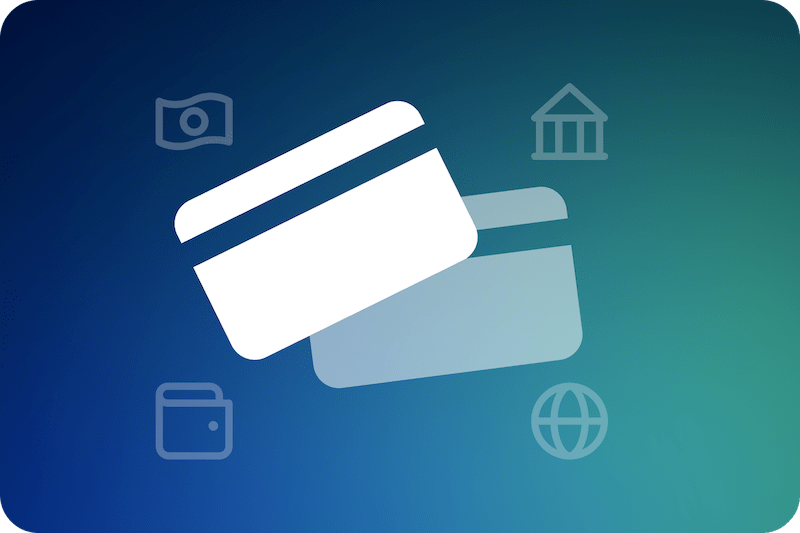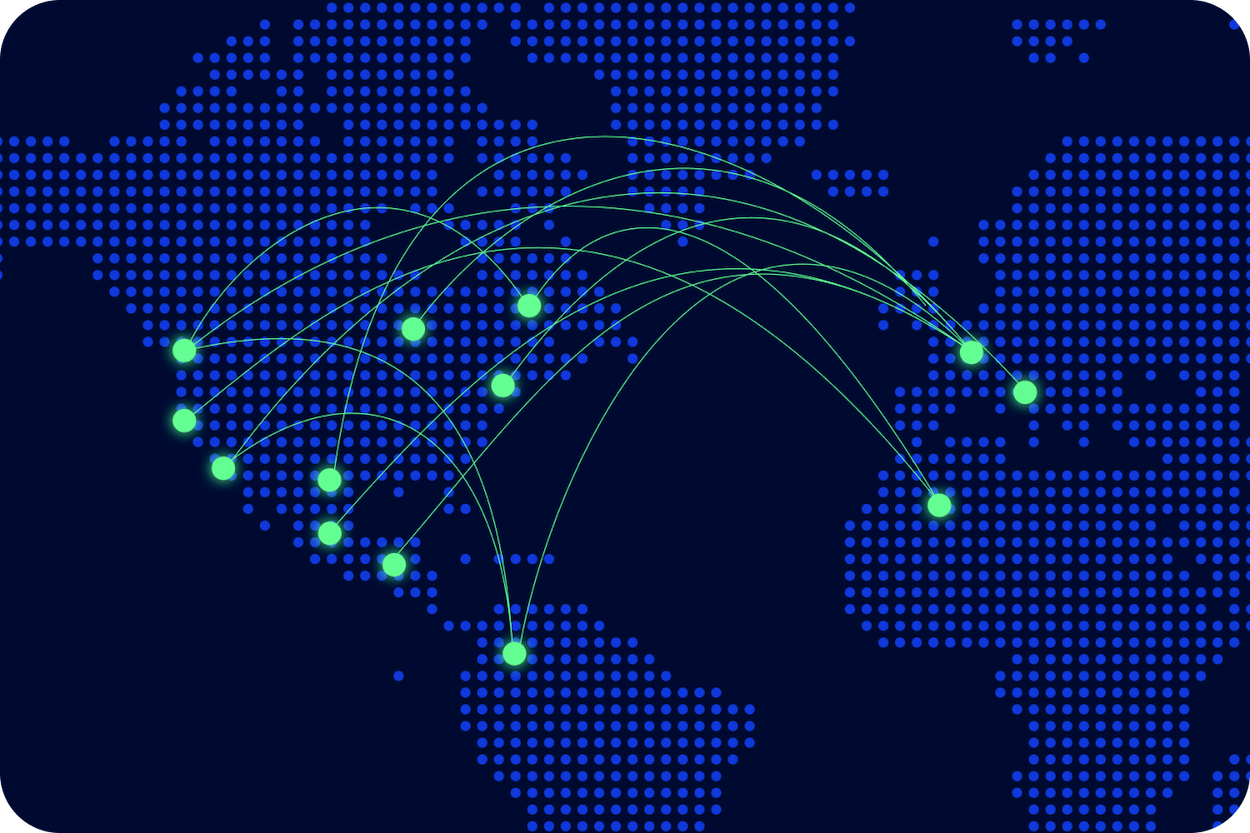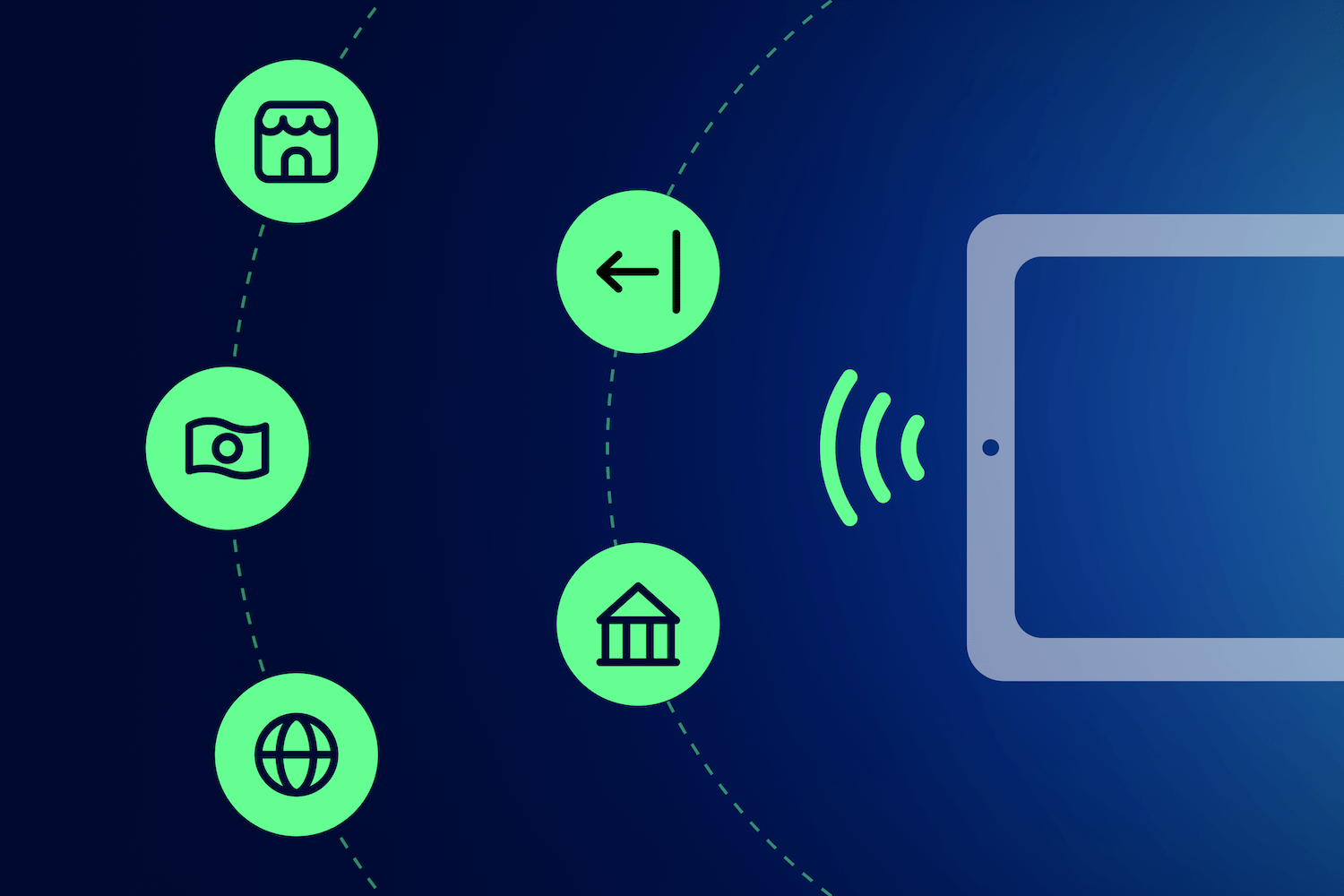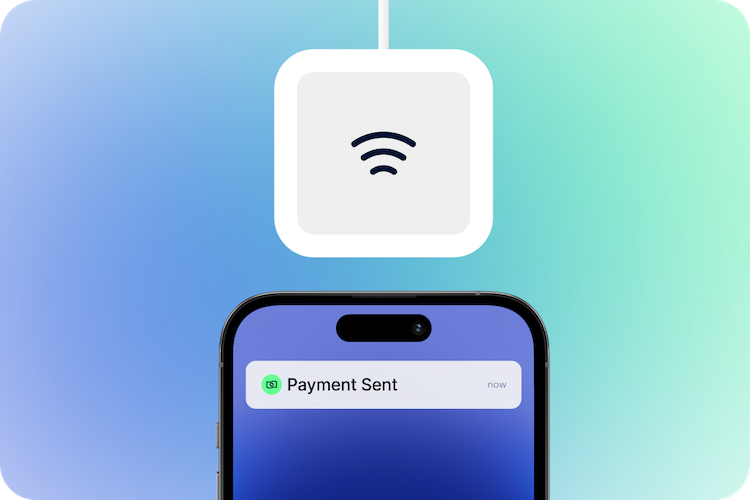How long does a wire transfer take?
Wire transfers are a popular way to send money quickly and securely. Learn how they work and what can impact processing times.
-min.png)
There are several ways to exchange money today. Common options include checks, bills, PayPal, Venmo, Zelle, and ACH transfers. As the financial industry evolves, certain methods become less relevant.
Bills and checks, for instance, are becoming more outdated every year. And since 2018, the value of non-cash payments has grown by an average of 9.5% per year, reaching $128.5 trillion in 2021 and rising.
Wire transfers are a fast and flexible non-cash payment method, ideal for large transactions and sending money abroad. They offer a secure way to transfer funds domestically or internationally, often within hours or days. While commonly used in B2B payments, consumers and peers can also use wire transfers.
Below, we discuss what wire transfers are, how long they take, and how to use them.
Key takeaways
- Non-cash payments are growing rapidly, replacing checks and bills
- Wire transfers are fast and secure, ideal for large and international transactions
- Domestic wire transfers usually take less than 24 hours but can take up to 3 days
- International wire transfers take 1 to 5 business days depending on various factors
- Banks use secure systems like Fedwire, CHIPS, and SWIFT for wire transfers.
How long does a wire transfer take?
Several factors come into play when determining the time a wire transfer takes. The type of transfer will determine quite a bit.
There are two different kinds of wires you can send — domestic and international.
Domestic wire transfer time
A domestic wire means sending a transfer to someone in the same country. These usually take less than 24 hours to process, though they may take as long as 3 business days.
International wire transfer time
An international wire involves sending money to someone in a different country.
These transfers are beneficial because they offer features like converting the money to the recipient's local currency during the transfer.
International wires take anywhere from 1 to 5 business days to transfer. The banks' individual processing times and time zone differences affect this.
|
|
|
|
|
Processing time |
<24 hours to 3 business days |
1–5 business days |
|
Fees |
0–$35 |
$35–$50 |
|
Information required |
Bank account and routing numbers |
SWIFT/BIC code, bank account details, intermediary bank details |
|
Complexity |
Straightforward |
More complex |
|
Regulations |
National regulations |
International regulations, anti-money laundering |
|
Currency |
No currency conversion |
Currency conversion required |
|
Availability |
Business hours, bank cut-off times |
Subject to international banking hours and holidays |
|
Security |
Standard encryption protocols |
Enhanced security and verifications |
How wire transfers work
Back in the 1800's, banks would send wire transfers by telegram. Western Union created this system in 1872. The sender would pay a transfer fee to one telegram operator, who would then write in codes and passwords.
These cryptic messages would inform the recipient's telegram operator of the transfer. This ensured a safe and secure method with little chance of interception.
Luckily, things are a bit more modern now due to flaws in the former system.
Instead of sending telegrams across the world, banks have simplified the wire transfer process.
The United States, for example, uses three main systems to send these communications: Fedwire, CHIPS, and SWIFT.
To start a wire transfer, you must fill out a sender request. This involves listing key information, like:
- The recipient's legal name
- The recipient's contact details
- The recipient's bank account number
- The recipient's routing number
- Your banking information
- Your government issued ID
You'll also provide the amount you want to send and specify the account from which the funds will be drawn. The bank or financial institution will then initiate the transfer by sending encrypted electronic communication to the recipient's institution. This process may involve multiple verifications and security checks to ensure the transaction's security.

Where can I send a wire transfer?
You can send a wire transfer anywhere domestically or internationally. Some things to consider about the recipient's location include the following:
- Regulations: Some countries have strict regulations for anti-money laundering and sanctions compliance. It's best to know the regulations of your recipient's location before initiating a wire transfer.
- Currency controls: Certain countries have currency controls in place. These can make it more difficult for your recipient to receive the wire transfer.
Transfer fees will vary depending on domestic and international wires. International exchanges usually cost more to send.
Common issues that delay international wire transfers
Just like many processes, international wire transfers can encounter a few obstacles. These factors can slow down processing times and delay the receipt of funds.
Recipient detail errors
A common cause of slow international wire transfers is errors in recipient details. This happens when any part of the sender's request is incorrect, including:
- Any intermediary banks (third-party financial institutions that act as middlemen)
- SWIFT codes
- The recipient's bank account number
- The routing number
- The recipient's legal name
It's important to use precision when filling out these details. This can help avoid any delays your recipient may face while receiving funds.
Bank holidays
Sending a wire transfer on bank holidays can delay the process and arrival time, as well.
Here are some holidays that can delay wire transfers in the US:
- New Year’s Day
- Martin Luther King Jr. Day
- Washington’s Birthday (Presidents Day)
- Memorial Day
- Juneteenth National Independence Day (Newest Holiday)
- Independence Day
- Labor Day
- Columbus Day
- Veterans Day
- Thanksgiving Day
- Christmas Day
Some common international bank holidays to consider include Good Friday, Easter Monday, and Boxing Day.
If you start a wire transfer on a holiday, it can be delayed by one or more business days, depending on the day of the week.
Use a tool like Google Calendar or Time and Date to view bank holidays across the world and help avoid unexpected delays.
Weekends
Weekends are another issue some run into with international wire transfers. Most banks in the US close their offices Saturday and Sunday. Some places overseas have a different weekend schedule.
For example, parts of the Middle East have a working week of Sunday through Thursday. Sending money to somebody on Friday can cause delays. In Iran, the weekend falls on Thursday and Friday.
Banks close on Friday and Saturday in the Maldives and Egypt.
It's best to keep these weekend differences in mind when using money transfer services.
Currencies involved
Currencies can play a major role in international wire times. Certain locations have a higher rate of transaction. This means it's common for countries like the US and Europe to exchange money, making it a faster process.
You'll experience fewer delays with major global currencies like the US Dollar, European Euro, or the British Pound.
For weaker currencies, less efficient payment channels are common. This can result in an additional delay of 1 to 3 business days.
Time zones
Time zone differences significantly impact wire transfer times. Each region operates on its own schedule, which can cause delays when sending money internationally.
For example, the North American east coast is 12 to 14 hours behind countries like Japan and South Korea. A wire initiated in the afternoon in the US might not be processed until the next business day in Asia.
How you pay for your transfer
There are a few ways you can pay for a wire. The most common involves pulling funds straight from your account. This is one of the fastest methods with little delays.
Other ways to fund the transfer include automated clearing house (ACH) and debit. ACH will take longer than debit and may result in longer processing times.
The bank or company facilitating the transfer
The financial institution that facilitates your transfer can affect the timeframe. Some things to consider include:
- The bank network: Larger banks have direct connections with institutions around the world. This can reduce the need for intermediary banks and thus cut down on time.
- Cutoff times: Each financial institution has a cut off time for wire transfers. This is the time in which you must file the transfer for the bank to process it the same day. Banks with later cut off times can help you avoid delays.
The number of intermediary/correspondent banks
Some international transfers require intermediary or correspondent banks. These are third-party institutions. They help complete the transfer when the two banks involved have no prior connection.
These third-party institutions can run verification tasks and initiate safety checks. While this is important for the security of your transfer, it can take more time to complete.
Anti-money laundering & fraud regulations
Banks and financial institutions have to abide by strict regulations when transferring money. For example, institutions must report on payments over $3,000. This helps avoid any fraud.
The Financial Crimes Enforcement Network (FinCEN) requires these regulations to keep all transfers safe.
Despite the bank's best efforts, repeat checks may delay your international wire transfer. The bank cannot communicate these delays, which can understandably cause frustration.
The destination country
Banking infrastructure varies all over the world, which can slow communication between countries and extend processing times.

What information is needed for a wire transfer?
There are a few things you need to include when submitting a wire transfer send request.
Required info to send a wire transfer includes:
- The sender's government issued ID
- The sender's full legal name and valid contact information
- The sender's bank account details
- The recipient's full legal name and valid contact information
- The recipient's bank account details
- The recipient's account routing number
The top ways to send an international wire transfer
Method 1: Make an international wire transfer online through the bank
You can complete a wire transfer quickly through your bank's online portal. The process looks a little something like this:
-
Find the wire transfer page: Each bank's portal has a wire transfer page. You can navigate it by looking for "Transfer & Pay" and then choosing something like "External Transfers & Wires".
-
Check your online transfer limit: All banks have an online transfer limit. Yours may be per transaction, per day, or per month. It's best to know what you can send before you initiate the transfer.
-
Provide bank details: You'll fill out your banking information and the recipient's. This includes full legal names and contact details, account numbers, and routing numbers.
-
Enter the amount & currency type: Now, you'll fill out the amount for your wire transfer and the currency.
-
Pay the processing fee: Some banks charge processing fees for international transfers. These can range anywhere from $35 to $50.
-
Find out processing time: Your bank or credit union will display the estimated time for the transfer. You may also track the wire through an IMAD/OMAD ID.
Method 2: Making an international wire transfer in the bank branch
Another option is to complete the wire transfer at your bank's physical location. Here's the steps you can follow:
-
Bring all banking data: Bring all required information to your bank's physical branch.
-
Choose the transfer amount & currency: Decide the amount you want to send and the currency. Your bank teller will help you fill this out.
-
Pay the processing fee: Just like online, most physical branches charge transfer fees as well. You can expect to pay anywhere from $35 to $50.
Method #3: Making an international wire transfer over the phone
You can make an international wire transfer by calling your bank. They may guide you through the steps, including communicating account details and paying the processing fee.
Method #4: Use an alternative transfer service
Alternative transfer services offer a different method than traditional banks. They usually have faster processing times and cheaper fees than financial institutions.
PayPal
PayPal is an online platform that allows you to send money to friends and family. They have a wire transfer option for personal and professional purposes, as well.
Depending on the recipient’s country, they can receive the funds in a few seconds or a few days.
For amounts $500 and under, you can use the instant transfer option. For anything over $500, you'll have to use the wire transfer feature.
For international wires, you should expect a timeframe of 3 to 5 business days.
Western Union
Western Union is a well-known money transfer servic. They offer four options for sending a wire - in-person, online, by phone, and via mobile app.
You can track your transfer through an MTCN number. This allows you to view the progress of the transfer and alert the recipient when it arrives.
Other alternative transfer services
Some other popular alternative transfer services include:
- Money Gram
- Wise
- Remitly
- Cash App
How much does a wire transfer cost?
The cost of your wire transfer will depend on the kind - domestic or international.
Average wire transfer costs
Most banks offer free domestic wires, but some may charge fees up to $35.
International wires typically cost anywhere from $35 to $50.

Alternatives to wire transfers
Wire transfers aren't the only way to send money to those near and far.
One alternative is an ACH transfer. This method uses the Automated Clearing House system. Common uses for an ACH transfer include paying employees, handling bills, and sending money to friends.
Many well-known platforms like Venmo and Zelle use ACH transfers.
Another option currently on the rise is cryptocurrency. You can exchange money with decentralized funds like Bitcoin and Ethereum.
Keep in mind that these two alternatives may take longer and feature a smaller global reach.
Sending checks online is another alternative, albeit much slower than using a wire transfer.
How to cancel a wire transfer
Wire transfers are known for being fast, which can make it difficult to cancel one.
If you need to reverse a transfer, you should get in contact with the company that facilitated it right away.
You can go in person, reach out by phone, or check the online cancellation options.
You'll need to provide every transaction detail and request cancellation. The financial institution will check the status of the transfer. Be aware that canceling most likely won't be an option if the funds have already left your account.
Are wire transfers reported to the IRS?
Under the Bank Secretary Act, institutions must report wire transfers over $10,000 to the IRS. This Currency Transaction Report will include information about you and your recipient. It will also explain the nature of this transaction.
Wire transfers aren't taxable in themselves, but certain circumstances can make them taxable. These circumstances include transfers that represent investment gains and large gifts. Other situations may also apply.
While there are various methods for sending money, wire transfers remain highly popular. They provide a quick and secure way to transfer funds domestically or internationally, making them ideal for large transactions and international exchanges, especially for B2B transactions.
At Plooto, we empower your business by simplifying global payments. Our comprehensive dashboard lets you automate and track all your accounts payable functions, making it easy to send money internationally.
Try Plooto free for 30 days and experience the difference it can make for your business transfers.
Further reading
Learn more about popular B2B payment types, their benefits, and how they work.
Table of contents
How long does a wire transfer take? How wire transfers work Where can I send a wire transfer? Common factors that delay international wire transfers Information needed to send a wire transfer Top ways to send an international wire transfer Wire transfer costs Alternatives to wire transfers How to cancel a wire transfer Are wire transfers reported to the IRS?
Sign up in minutes.
Start saving hours.
Manage all of your payments in one platform. No jumping between apps necessary.
Start free trialSpeed up and simplify your B2B payments with Plooto — entirely free.
Learn if Plooto is right for you as you scale your business.
Start free trial


